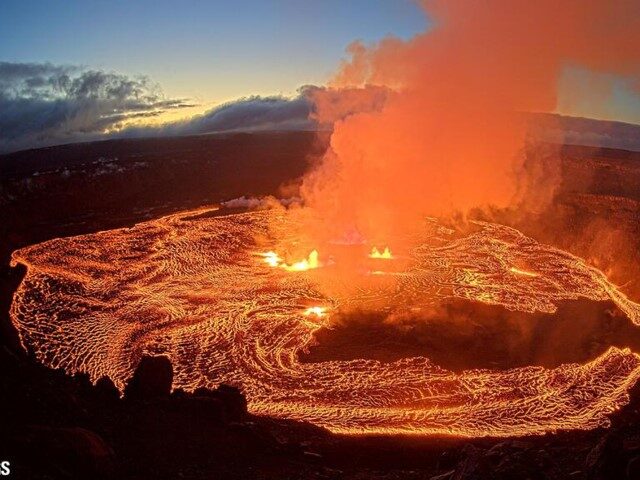Scientists report seismic activity has increased regarding Hawaii’s Kilauea volcano, which is known as one of the most active on the planet.
In a recent statement, the U.S. Geological Survey (USGS) said it detected the activity, Fox Weather reported Saturday.
The USGS said:
Inflationary tilt is continuing at a slightly slower rate in the area just south of the summit caldera. Inflation at the summit of Kīlauea remains close to its highest level in over 5 years and has nearly returned to the level seen just before the last eruption on September 10th. Seismicity beneath Kīlauea summit region, which began October 4, increased with about 320 earthquakes occurring in the last 24 hours.
The volcano was not actively erupting although hundreds of minor earthquakes were detected, the Fox report said.
The USGS describes an earthquake as the result of two blocks of earth quickly slipping past each another.
The Fox article noted, “The volcano is more than 100 miles from Honolulu, which has a population of about 350,000. An eruption in 2018 destroyed more than 700 homes and caused hundreds of millions of dollars in damage.”
Though #Kilauea is one of Earth’s most active volcanoes, there can be long periods of time with no eruptive activity on the surface. The glow has diminished for now, but how long will this last? #HVO #VolcanoWatchhttps://t.co/gKnhP2jsOl pic.twitter.com/A4sHbwCWBG
— USGS Volcanoes🌋 (@USGSVolcanoes) October 6, 2023
On Friday, Hawaii Volcanoes NPS said because of the increase in seismic activity and inflation at the volcano’s summit, the park temporarily closed some of its trails and other areas to visitors:
Due to elevated seismic activity and inflation at the summit of Kīlauea volcano, Hawai‘i Volcanoes National Park is temporarily closing specific trails, viewing areas, and parking lots until further notice. Visit the park website for more information. https://t.co/kgHqKBoKpz pic.twitter.com/hCzqRndleS
— Hawaii Volcanoes NPS (@Volcanoes_NPS) October 7, 2023
USGS also said, “Sulfur dioxide gas emissions have greatly decreased; however, local concentrations of sulfur dioxide or hydrogen sulfide may persist in downwind areas, and residents may notice odors of these gases occasionally.”
Live video footage shows the Kīlauea Volcano:
In September, Kilauea showed signs of erupting after a two month rest, WBNS reported September 12.
“The Hawaii Volcano Observatory said the eruption was observed Sunday afternoon at the summit of Kilauea,” the outlet said:
“Images released of the volcano show showers of molten lava spraying upward in geysers from the bed of cooled magma on top of the volcano, as well as glowing cracks at night indicating the superheated rock underneath,” WBNS stated.

COMMENTS
Please let us know if you're having issues with commenting.